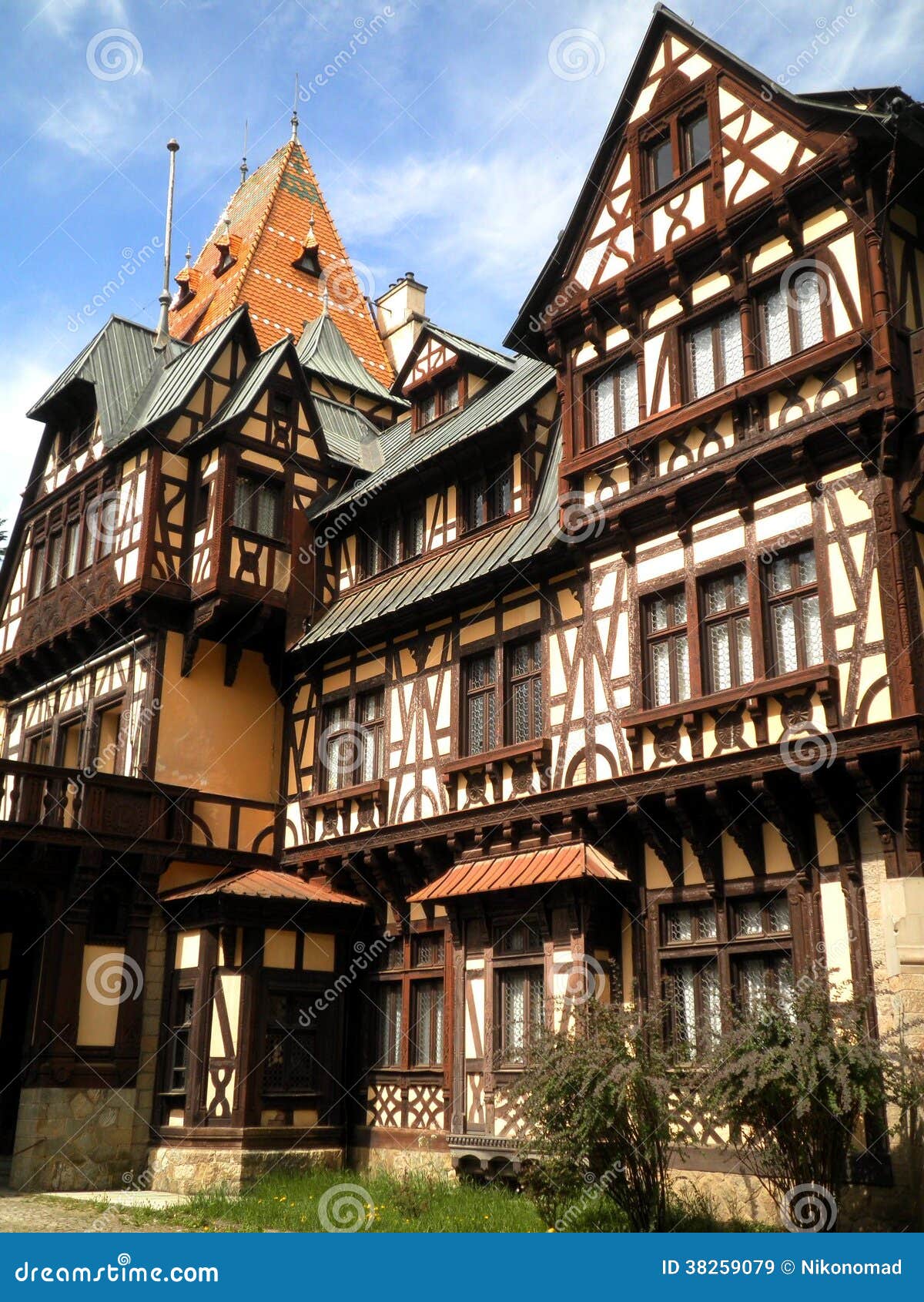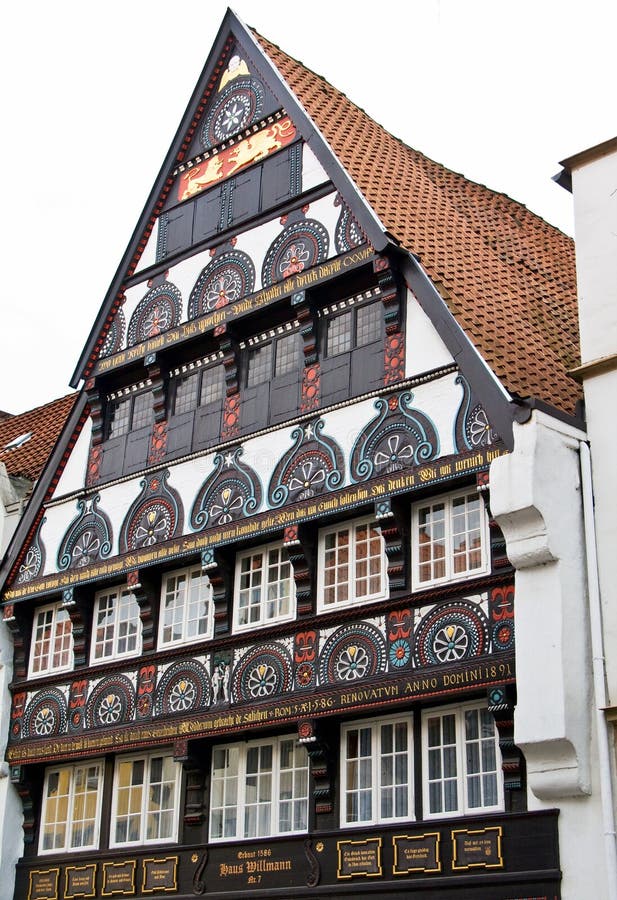Table Of Content

Arts and Crafts was driven by a moral and social urge and arising in response to the effects of the Industrial Revolution. In its design manifesto, it reached back to pre-industrial modes of making in the age of the machine. Along with the kinds of medieval crafts that were revived by William Morris, the architects of the Arts and Crafts revived forms of half timbering. The style was used in many of the homes built in Lake Mohawk, New Jersey, as well as all of the clubhouse, shops, and marina. In South Yorkshire, the oldest timber house in Sheffield, the "Bishops' House" (c. 1500), shows traditional half-timbered construction. Scribing or coping was used throughout Europe, especially from the 12th century to the 19th century, and subsequently imported to North America, where it was common into the early 19th century.
Germany, the half-timbered master
The first half-timbered houses were built in Germany around the 1300s, with the style really becoming popular from the 1400s-1600s. Are you put off by the cost and effort involved in building an old half-timbered house? In this case, you can also resort to the option of building a new property.
Timber framing
Colmar’s enchanting half-timbered houses captivate visitors with their distinctive charm and architectural beauty. The city also boasts numerous lesser-known spots and hidden gems, unveiling fascinating connections to its historic structures. Venture with us off the beaten path, exploring Colmar’s secret corners and their captivating connections to half-timbered houses. The half-timbered style, also known as ‘Fachwerk’ in German and ‘colombage’ in French, dates back to the late medieval period, around the 12th century. This architectural style originated in northern Europe, with early examples found in Germany, France, and England. At the time, timber was an abundant and inexpensive building material, which contributed to the widespread adoption of half-timbered construction.
Post construction and frame construction
Timber frame home in Grant, California. Structural design - ARCHITECT Magazine
Timber frame home in Grant, California. Structural design.
Posted: Sun, 12 May 2019 23:24:44 GMT [source]
Ironically, this light-hearted style sprang out of one of the bloodiest conflicts in the world. “The Great War sent many young American soldiers to Europe for the first time, and many came back charmed by the romantic architecture of rural France and Germany,” Gellner says. If the beams resemble the letter “K”, you the “Wild man.” The origin of this name is not really known. Maybe these inhabitants of medieval Germany was represented by the man with the strange behavior of the wild. According to historians, half-timbered houses originated in Germany, in areas where there were rivers and ship business developed. To repair and build ships, it was necessary to understand the carpentry business.
Great Tangley Manor, a 1000-Year-Old Countryside Home in the UK, Comes With a Stunning History—And a $13.5 ... - Architectural Digest
Great Tangley Manor, a 1000-Year-Old Countryside Home in the UK, Comes With a Stunning History—And a $13.5 ....
Posted: Fri, 02 Dec 2022 08:00:00 GMT [source]
Half-timbering is a way of constructing wood frame structures with the structural timbers exposed. The wooden wall framing — studs, cross beams, and braces — are exposed to the outside, and the spaces between the wooden timbers are filled with plaster, brick, or stone. Originally a common type of building method in the 16th century, half-timbering has become decorative and non-structural in designs for today's homes. Log building was the common construction used for housing humans and livestock in Norway from the Middle Ages until the 18th century. Timber framing of the type used in large parts of Europe appeared occasionally in late medieval towns, but never became common, except for the capital Christiania.
Panels between the studs were made of brick in herringbone patterns or of plaster molded or incised with floral forms or with inlays of slate, tile, or marl. These were often crisscrossed under windows, and in England, where more timberwork was exposed, they were assembled in cusped shapes or chevrons to create the striking patterns of the “black and white” manor houses of Cheshire and Lancashire. Half-timbered houses can be found in Romania mostly in areas once inhabited by Transylvanian Saxons, in cities, towns and villages with Germanic influence such as Bistrița, Brașov, Mediaș, Sibiu and Sighișoara.
Word History and Origins
So a high, narrow house saved the owner money, yet to maximize interior space the non-taxed upper floors were lengthened. Also, the projecting upper floors helped protect the lower house from rain and snow in the days before gutters and down-pipes. The construction methods used in half-timbering allow buildings to be easily disassembled and put up again elsewhere.
Simplify Your Life: It’s Your Money – Keep More of It!

The Spanish generally follow the Mediterranean forms of architecture with stone walls and shallow roof pitch. Castile and León, par example La Alberca, and the Basque Country have the most representative examples of the use of timber framing in the Iberian Peninsula. Europe is full of timber-framed structures dating back hundreds of years, including manors, castles, homes, and inns, whose architecture and techniques of construction have evolved over the centuries. An alternate construction method is with concrete flooring with extensive use of glass.
Poteaux-en-terre (posts in ground) is a type of timber framing with the many vertical posts or studs buried in the ground called post in ground or "earthfast" construction. The tops of the posts are joined to a beam and the spaces between are filled in with natural materials called bousillage or pierrotage. Germany has several styles of timber framing, but probably the greatest number of half-timbered buildings in the world are to be found in Germany and in Alsace (France). There are many small towns which escaped both war damage and modernisation and consist mainly, or even entirely, of half-timbered houses. In 1921, Einar C. Petersen, a Swiss-trained Danish artist, designed and built the still-standing Petersen Studio Court on Beverly Boulevard, considered the forerunner of the storybook style.
The decorative manner of half-timbering is promoted in Germany by the German Timber-Frame Road, several planned routes people can drive to see notable examples of Fachwerk buildings. Throughout Europe, tourists flock to cities and towns that prospered during the Middle Ages. Within the "Old Town" areas, original half-timbered architecture has been restored and maintained. In France, for example, towns like Strasbourg near the German border and Troyes, about 100 miles southeast of Paris, have wonderful examples of this medieval design.
A leading manufacturer of these types of timber connectors was the Timber Engineering Company, or TECO, of Washington, DC. The proprietary name of their split-ring connectors was the "TECO Wedge-Fit". During World War II, the United States Army Corps of Engineers and the Canadian Military Engineers undertook to construct airplane hangars using this timber construction system in order to conserve steel. Wood hangars were constructed throughout North America and employed various technologies including bowstring, Warren, and Pratt trusses, glued laminated arches, and lamella roof systems. Unique to this building type is the interlocking of the timber members of the roof trusses and supporting columns and their connection points.
Which brings us to the San Fernando Valley, once the place of ranchos and fields and farms, and a blank slate for thousands of houses. In his book “Granada Hills,” Jim Hier reproduces a 1926 tract plan for the new town, with hundreds of lots of different sizes on yardstick-straight streets marked with the ages and types of orange trees (“5-year-old Valencia”). One house type that has endured and been reinterpreted for two centuries is the hybrid Anglo-Californio “Monterey style.” The first, built in 1835 by Boston merchant Thomas Larkin, still stands in Monterey. The clapboard walls of a Monterey house scream “Cape Cod,” yet the long, airy verandas are so, so Californio.

No comments:
Post a Comment